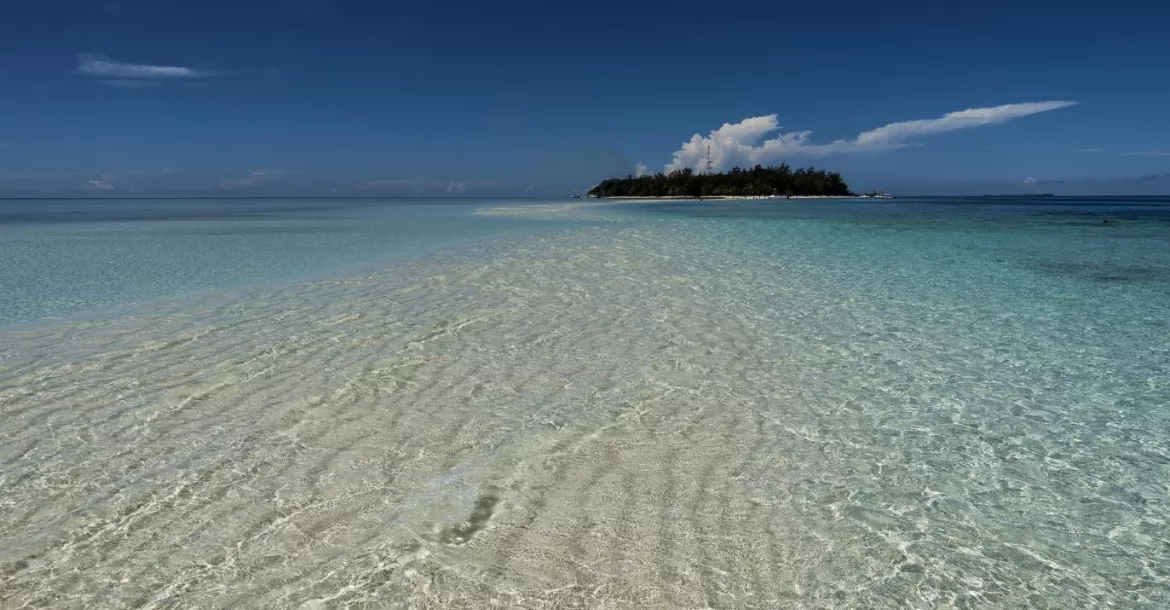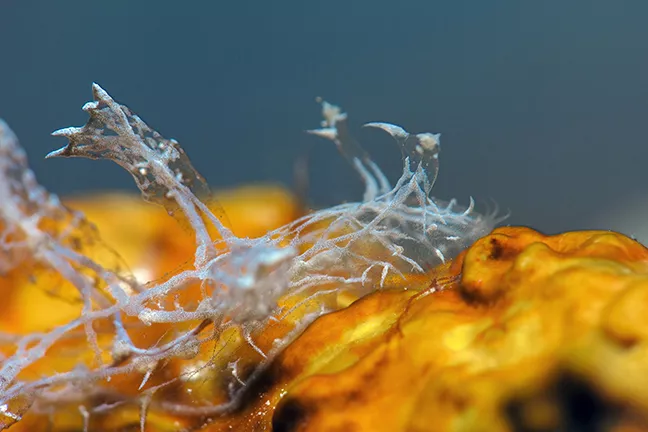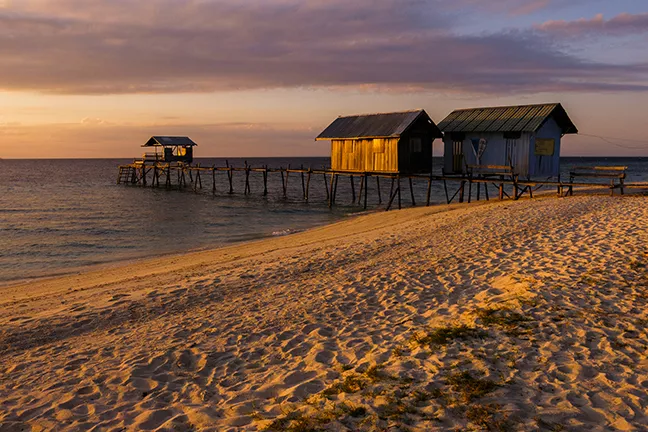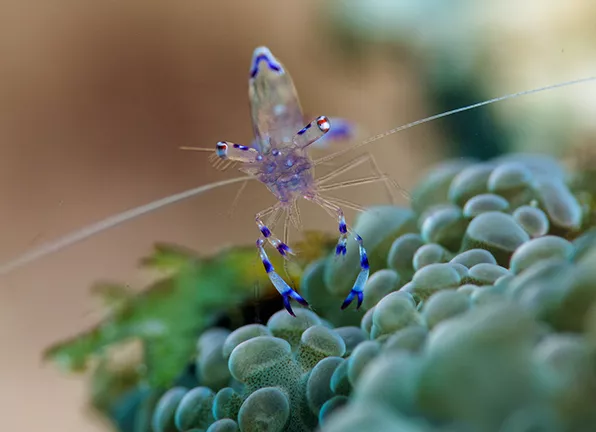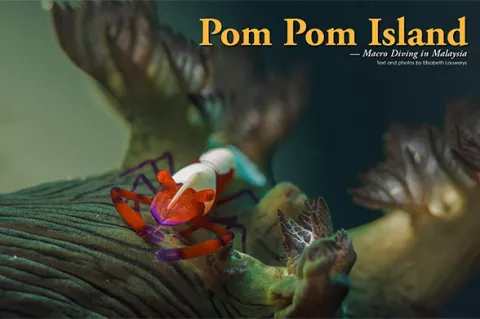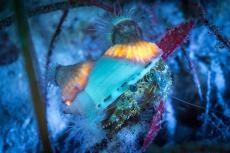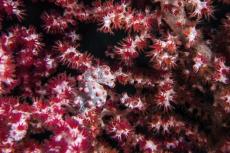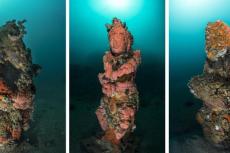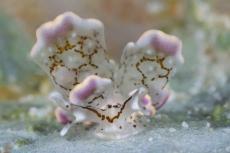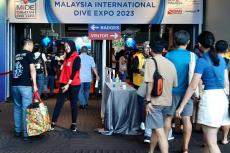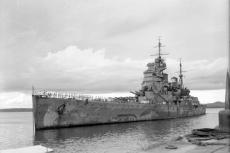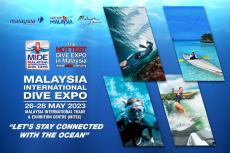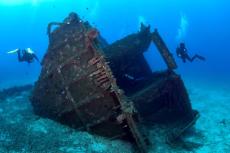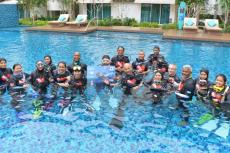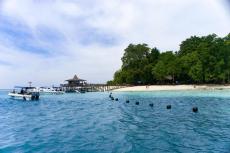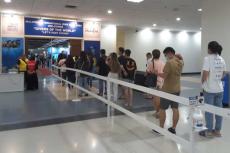Blessed with some of the richest waters in the world, Borneo’s Pom Pom Island offers some truly memorable macro diving. If you want prolonged, up-close encounters with some crazy macro critters and the chance to photograph the tiniest nudibranchs in the world, Pulau Pom Pom, in remote Sabah, is the place to go!
Contributed by
Factfile
Thailand-based Elisabeth Lauwerys has long been passionate about exploring the marine depths. In 2004, she opened Oceans Below Underwater Video Productions on Koh Tao.
Since then, she has created the dive industry’s first professional-level video training course; won numerous underwater video competitions; worked with the BBC and other production houses; created a new look for the PADI promotional videos; and has recently started making the transition from video to still photography.
She continues to teach budding underwater videographers and travel the world in pursuit of the most spectacular and diverse diving environments—all the while, equipped with her cameras and housings.
To learn more about the author’s work, check out: Oceansbelow.net.
Pom Pom has become increasingly known as a macro dive destination over the last few years. The area is especially famous for its beautiful beaches and the abundance of green turtles. Its more famous neighbour, Pulau Sipadan, has long been attracting divers by the thousands to explore the steep, deep walls surrounding the island. Meanwhile, only a few in-the-know macro photographers are diving the rich, sloping, rubble reefs around Pom Pom. Their reward is jaw-dropping encounters with numerous species of nudibranchs and other rarely encountered macro life.
I have been on the Pom Pom carousel for the last four years and have just returned from another great trip. This time, my spotter and macro-enthusiast buddy, Ah Long, took me to a new site he recently discovered. The secret site, dubbed Macromania, was said to have revealed an astounding number of rare and spectacular macro life including what some consider the “Holy Grail” of nudibranchs—the Melibe colemani.
Equipped with my two stacked macro wet lenses, I was eager to start photographing the 3mm to 1cm long nudibranchs Ah Long assured me we would encounter on this dive site. Indeed, it proved to be a macro-lover’s paradise!
Just short boat trip from the resort, the gentle slope stretches from a shallow plateau at 5m to beyond 45m. The site, comprised predominantly of rubble, is home to some extraordinary nudibranchs, with new ones being found on a regular basis.
Our dive group spent a minimum of 70 minutes on each dive at a maximum depth of 24m before being chased to the surface by our exceedingly irritated dive computers. There was just too much to shoot in too little time. Besides all the nudibranchs found, we also were able to spend some time with a tiger shrimp!
Giddy with anticipation, we headed back to the resort to check out our shots, and were happy to have been rewarded for our endeavours. If you are a macro critter fan, this dive site is definitely a must. It is all about the small stuff here.
Macro wet lenses
Pom Pom Island’s sea turtles are great to photograph, but the real challenge was shooting the small critters in the area. My Sony RX100IV camera is great for wide-angle, but to get close-ups of the tiniest nudibranchs and shrimps, I found I needed to add wet lenses (which can be added or removed underwater).
Macro photography gives a totally different perspective of the world of the smallest reef life—a world often unseen by divers. For those who take their time and train their eyes, those boring patches of rubble can prove to be teeming with life! Equipped with my rig and a Nauticam SMC macro diopter, I went on the first dive.
However, I soon realized I needed another wet lens to be able to close the distance. In between dives, I stacked the Inon +8 on top. Then, all I needed to do was get close to my subjects and zoom in as much as I could to create a superb magnified image.
But it proved easier said than done, as some nudibranchs moved surprisingly fast, shrimps jumped around the rubble and hydroids with Doto nudibranchs swayed in the current. It takes patience, understanding of light, positioning, composition, and of course, luck to get THE shot. On each dive, I spent countless long minutes waiting for the right moment to press the shutter button.
How to get there
There are daily flights from Kuala Lumpur and Kota Kinabalu to Tawau. From Tawau, continue the journey by a one-hour mini-bus drive to Semporna town. Speedboat transfer is from the Semporna jetty to Pom Pom Island. The boat ride takes about 45 minutes. ■
Many thanks to Celebes Beach Resort and Andy Chong for the numerous stays over the past few years. A big thank you to Nurul Yazid and dive guides Ah Long Yong and Axu Kokkonen for showing me the tiniest macro life on the reefs over and over again. See: Celebescuba.com.

